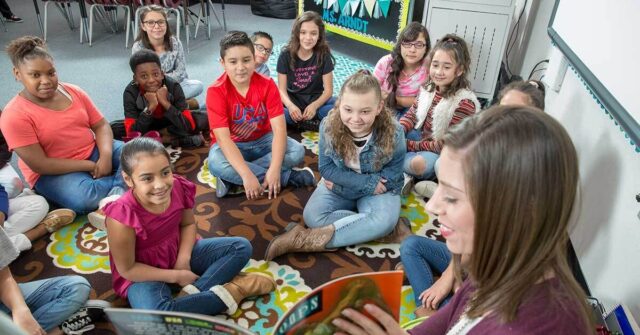
The Common Core Writing Book, 6–8, Gretchen Owocki's newest book, is out today. Gretchen covers not only the English Language Arts standards, but all the writing standards for literacy in social studies, science, and technical subjects. She identifies those lessons that work best in content-area classrooms, offers suggestions for cross-disciplinary collaboration, and provides common language for teachers across the disciplines. In this post, Gretchen explains the need for this newest entry in her series.
by Gretchen Owocki
Everywhere we turn, conversations about the Common Core State Standards (CCSS) are at hand. For the first time ever, schools across the United States are using a common set of literacy standards to guide assessment and instruction—and educators and school leaders are grappling with the implications.
Many have examined their existing practices in light of the new standards and have been making strong curricular and instructional renovations in areas they believe need their attention most. Some are thinking maybe it has been enough to simply be aware of the new standards—and for the most part to continue with or gently tweak existing practices. Others, admittedly, have never paid much attention to the specifics of state standards and are still wondering if there is a reason to pay attention now.
—
The teaching is the most important variable affecting student achievement
—
Some educators are of the mind that new standards have created a useful new platform for schools to examine practices and improve in areas of need. They believe the changes they are making could lead to better instruction and learning. Some contend that new standards—regardless of how they are used—may not have much impact on student learning; after all, good teaching is good teaching regardless of the standards we have. And there are others who fear that because the standards are closely linked with highstakes standardized testing, teachers will feel compelled to place an emphasis on test preparation rather than on fostering broadly meaningful literacy. Clearly, the issues are complex.
SOME OPTIONS
Within such complexity, we could approach the situation in a number of ways. We could sit tight until we have more information about how the new assessments will play out, or until our district and state offices make their next set of recommendations regarding curriculum and instruction. But this suggests that the most important professional knowledge lies outside the school and that we should make changes only as guided by outside forces. And, in fact, many educators across the country have deliberated over the standards documents and noted some key areas they thought might be worth attending to in the best interest of the learners in their schools. These educators have been busy making decisions about how to use the standards as new starting points to make instruction better: more engaging for students, more collaborative across disciplines, and more in tune with students’ needs.
Another response has been a mad push for everyone in the school to get focused and quickly start teaching and assessing in light of the new standards. Some districts have scrambled to provide professional learning experiences for teachers in hopes of a quick transition. They have made switches to new types of lesson planning and new report cards, and teachers have done their best to keep up with the changes. But such efforts don’t necessarily involve a sustained collaboration among educators or a system for nurturing a balanced or manageable approach to improvement, and they often are not based on solid evidence.
So another response has been for educators to come together and start looking for curricular programs that advertise “comprehensive” and “research-based” ways to meet the new standards. And indeed there has been an asymptotic rise in the publication of programs and materials touting a strong alignment with the CCSS. But we are teaching in an era in which research evidence has confirmed that the teaching—not the program or set of materials—is the most important variable affecting student achievement (Cunningham and Allington 2011).
THE PLACES WE COULD GO
At the crossroads created by the CCSS, there are many paths we could take. Because effective teaching does not emerge from a set of standards, a mandate, a state office, or a manual, we must avoid paths that cast educators as secondary decision makers or that offer quick solutions or static packages. Effective teaching results from the skillful weaving of curriculum, carefully selected instructional practices, and thoughtful observation and assessment. Therefore, we must use this crossroads as an opportunity for educators to focus on teaching—and on improving teaching—in light of this new set of standards that has raised the expectations for student learning higher than ever. But we cannot let the standards control or manipulate our teaching into something awkward or feeling like it’s only for the test. Good teaching always feels like it’s for the student and for engaged learning.
School and district teams can build positive momentum in this direction by implementing the most promising practices known to date, and this book is designed to support this effort. The practices you will find in this book have been used effectively by many teachers; here they are altered and redesigned with special attention to the CCSS in a way that maintains the potential for teacher control and decision making in the best interest of learners. It would make little sense to implement the practices without observing and assessing your students. So along with suggested teaching practices you will find support for observing students to improve and fi ne-tune your instruction. Effective teaching is about taking note of learners’ knowledge, engagement, and responses to instruction and actively responding in light of all.
—
We must take care to not lose sight of meaningful teaching and learning
—
As we shape the new system and work within it, we must take care to not lose sight of meaningful teaching and learning. In working toward the new standards, kids are doing hard things. They are developing arguments, writing informational texts, using technology to collaborate and communicate, and drawing evidence from literary and informational texts to support the writing they are doing. Aiming for students to perform well with such tasks across disciplines doesn’t mean that we must abandon our work toward a meaningful curriculum. Within the new system, teachers who have always managed to “get it right” with writing can still allow students to write for authentic reasons; they can still support their exploration of multiple genres; they can still support content learning through writing; they can still offer students choices; and they can still arrange for them to use writing to inform the conversations of their lives. Students can and should still write for reasons that matter. These goals are not inconsistent with the goals of the CCSS—and in fact having them in place will strengthen our work with the standards.
But as we consider the new standards, the time is ripe for improvement. The time is ripe to consider ways to shift and alter our practices in light of contemporary knowledge and to weed out practices that may not be conducive to meaningful learning. This year, perhaps your team will try out new practices for writing within a particular content area; perhaps you will try a new way of planning across content areas; perhaps you will expand your repertoire of strategies for supporting students who express difficulty with school-based writing; or perhaps you will try differentiating your instruction in new ways. Where there is work to be done, this book can help.
The Common Core Writing Book, 6–8 is out now. Click here for more information
♦ ♦ ♦ ♦
 Gretchen Owocki demonstrates the importance of bringing meaningful instruction to not only traditional reading-instruction topics like comprehension, but also to contemporary issues such as Common Core and RTI. In the bestselling titles The Common Core Writing Book, 6-8; The Common Core Reading Book, 6-8; The Common Core Lesson Book, K-5; The Common Core Writing Book, K-5; and The RTI Daily Planning Book, she masterfully breaks down instructional issues and strategies into manageable chunks that help teachers differentiate instruction, meet curricular goals, and improve as practitioners.
Gretchen Owocki demonstrates the importance of bringing meaningful instruction to not only traditional reading-instruction topics like comprehension, but also to contemporary issues such as Common Core and RTI. In the bestselling titles The Common Core Writing Book, 6-8; The Common Core Reading Book, 6-8; The Common Core Lesson Book, K-5; The Common Core Writing Book, K-5; and The RTI Daily Planning Book, she masterfully breaks down instructional issues and strategies into manageable chunks that help teachers differentiate instruction, meet curricular goals, and improve as practitioners.


